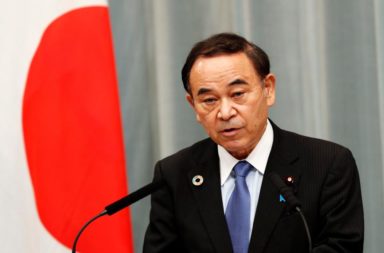Japan, the world’s fifth-biggest emitter of CO2, is to bring in legally binding targets to reach net-zero emissions by the year 2050. Prime Minister Yoshihide Suga is set to bind Japan to a target for carbon neutrality by 2050, a shift in the stance that will bring the country in line with the European Union and more than 60 other nations in efforts to combat climate change. The decision will make Japan, the world’s third-largest economy, the second Asian country after South Korea to aim for the 2050 target.
The new target will be announced by Suga when he makes his first address to parliament on Monday, after taking office last month, the Nikkei reported earlier this week. Japan previously said it would aim to reduce emissions by 80% by 2050 and achieve net-zero emissions sometime in the latter half of the century. Japan is the world’s fifth-biggest emitter of carbon dioxide, the heat trapping gas that scientists say is already causing major heatwaves, bigger and more powerful cyclones and periods of drought around the world.
The goal is the minimum emissions reductions required under the Paris agreement to keep global average temperatures from rising by more than 1.5C since the pre-industrial era. Japan had already pledged to rein-in greenhouse gas emissions by 80 per cent in the same time frame, but the lack of any clear commitment beyond that meant the government had been accused of being vague and reluctant to tackle the climate crisis. In order to reach the target, it is likely Japan will have to revise its energy generation plans significantly.
But traders say the obvious change in place is at odds with the nation’s plans to roll out new coal stations. “Any net zero commitment from a coal-intensive economy, such as Japan, has to be coupled with an urgent and credible coal phase out plan to be taken seriously,” Jan Erik Saugestad, CEO of Norway’s Storebrand Asset Management instructed.Storebrand has belongings underneath administration of round $90 billion with investments in Japanese firms and has been crucial of Japan’s stance on coal. “Japan’s solar and wind power potential is huge and Prime Minister Suga has the opportunity to accelerate this and embrace a modern and coal-free energy system,” he added.
Pressure has additionally been constructing from beneath with the variety of cities, cities and villages aiming for carbon neutrality by 2050 rising to 163 from 4 in somewhat over a 12 months, in accordance to the environment ministry. “Japan’s solar and wind power potential is huge and Prime Minister Suga has the opportunity to accelerate this and embrace a modern and coal-free energy system,” he added. Pressure has also been building from below with the number of cities, towns and villages aiming for carbon neutrality by 2050 increasing to 163 from 4 in a little over a year, according to the environment ministry.
In comparison, in the UK, the proportion of electricity generated from renewables was 44.6 per cent in the second quarter of 2020, while coal accounted for only 0.5 per cent, a record low, and gas accounted for 34.4 per cent. Nuclear generation accounted for 17.6 per cent of total electricity production, the government said last month. Investors said the apparent change in Japanese policy is at odds with the country’s plans to roll out new coal stations.





